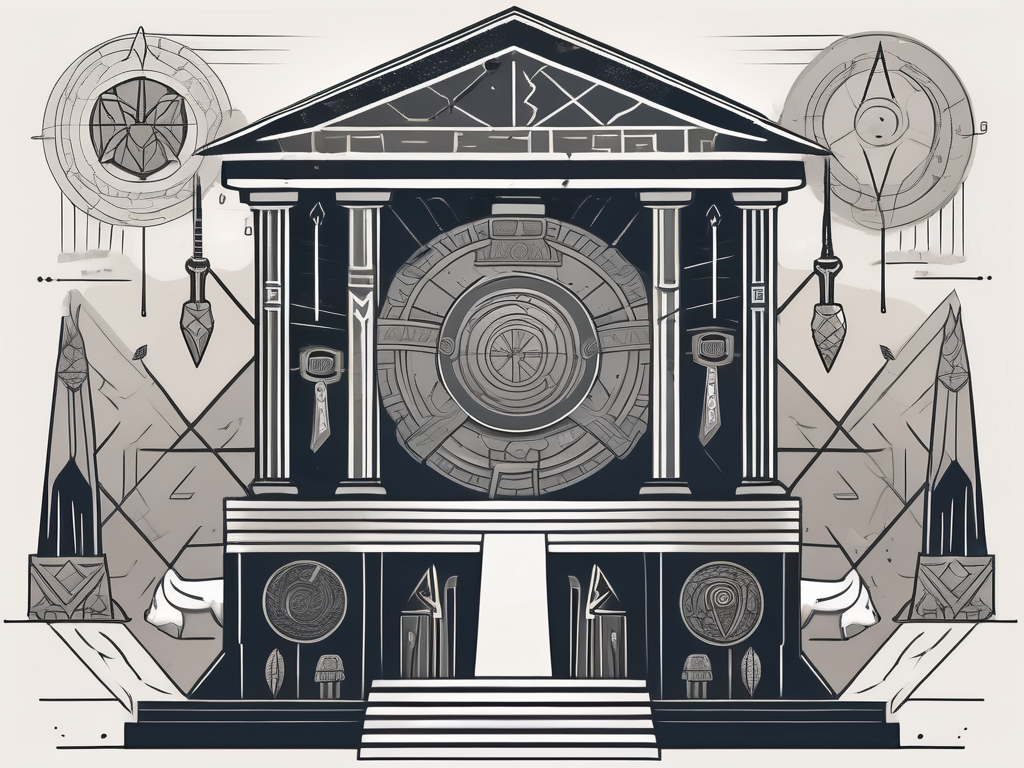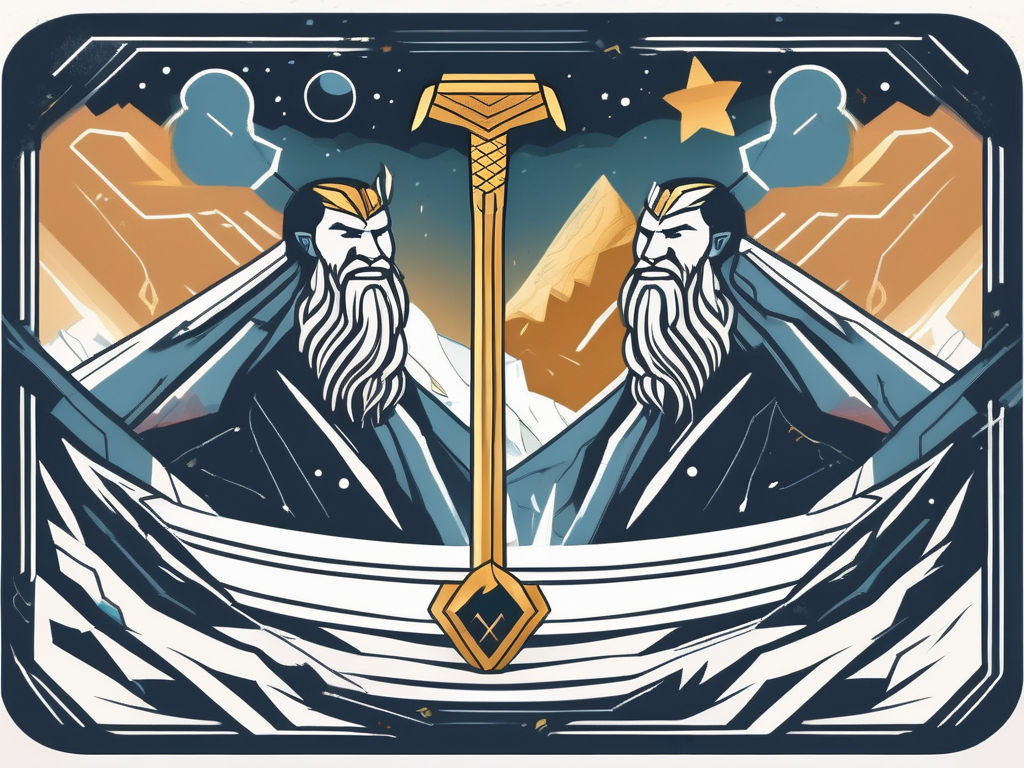When it comes to Norse mythology, the gods and goddesses within it each possess their own unique qualities and roles. One goddess, in particular, stands out for her enchanting beauty and fascinating story – the Norse Goddess of Beauty. In this article, we will delve into the captivating world of this goddess, exploring her mythology, symbolism, influence on Norse culture, modern interpretations, and enduring allure.
Unveiling the Identity of the Norse Goddess of Beauty
Before we can fully appreciate the allure of the Norse Goddess of Beauty, it is important to understand her identity and the mythology surrounding her. Known by many names, including Freya, Freyja, and Vanadis, this goddess holds a special place among the Norse pantheon. Let’s take a closer look at the mythical background of this intriguing figure.
In Norse mythology, the Goddess of Beauty is part of the Vanir, a group of gods and goddesses associated with fertility, abundance, and nature. She is often depicted as a stunning and alluring woman, radiating grace and charm wherever she goes. However, her story goes far beyond mere beauty.
Legend has it that the Goddess of Beauty is not just a symbol of physical attractiveness, but also a representation of the divine feminine power. She embodies the essence of love, beauty, and fertility, captivating the hearts of both gods and mortals alike. Her enchanting presence is said to bring joy and harmony to the world.
But the Goddess of Beauty’s role in Norse mythology extends beyond her captivating appearance and gentle nature. She is also associated with magic and sorcery, making her a multidimensional and complex deity. It is believed that she possesses the ability to harness the forces of nature and use them to her advantage, weaving spells and charms that can both heal and harm.
As a goddess of love, the Goddess of Beauty is often sought after for her guidance in matters of the heart. She is known to have a compassionate and understanding nature, offering solace to those who seek her counsel. It is said that her presence can ignite the flames of passion and desire, bringing lovers together and strengthening the bonds of affection.
Furthermore, the Goddess of Beauty is revered for her association with fertility. She is believed to have the power to bless couples with children and ensure the prosperity of their families. In ancient times, people would offer prayers and make offerings to her in the hopes of receiving her divine favor and assistance in matters of conception and childbirth.
Throughout Norse mythology, the Goddess of Beauty plays a significant role in various tales and legends. From her romantic entanglements with gods and mortals to her fierce battles against formidable foes, her stories are filled with adventure, passion, and intrigue. She is a symbol of strength, resilience, and the enduring power of femininity.
In conclusion, the Norse Goddess of Beauty, known by many names, is a complex and fascinating deity. Her beauty is not just skin-deep; it is a reflection of her divine essence and the multitude of roles she embodies. From love and fertility to magic and sorcery, she captivates the hearts and minds of those who seek her presence. The mythology surrounding her is a testament to her enduring popularity and the profound impact she has had on Norse culture and belief systems.
The Symbolism Attached to the Norse Goddess of Beauty
The Norse Goddess of Beauty is not just a mythical figure; she holds deep symbolism that has influenced Norse culture and society. Let’s explore the significance attached to this captivating goddess and the themes she represents.
Legend has it that the Norse Goddess of Beauty, known as Freyja, is not only a symbol of physical beauty but also embodies the concept of inner beauty. She teaches us that true beauty comes from within, radiating from a person’s character and actions. Freyja’s presence in Norse mythology serves as a reminder to value not only external appearances but also the beauty that lies within each individual.
The Goddess as a Symbol of Love and Fertility
One of the primary symbols associated with the Norse Goddess of Beauty is love and fertility. She is believed to bring blessings of love, passion, and harmony to those who seek her favor. In Norse society, she represents the ideal of beauty and the importance of love in human relationships.
Freyja’s association with love goes beyond romantic relationships. She is also seen as a symbol of familial love, emphasizing the importance of strong bonds within families. It is said that she watches over mothers and children, ensuring their well-being and nurturing their love for one another.
Furthermore, Freyja’s connection to fertility is deeply rooted in Norse mythology. She is often depicted with a necklace called Brísingamen, which is said to enhance her fertility and grant her the power to bring forth new life. This symbolism highlights the vital role that fertility played in Norse society, where the continuation of the family line was of utmost importance.
The Goddess’ Connection with Magic and Sorcery
Besides her association with love and fertility, the Norse Goddess of Beauty is also connected to magic and sorcery. It is said that she possesses deep knowledge of seidr, a form of Norse magic. This aspect of her character adds an enigmatic and mysterious aspect to her already captivating persona.
Seidr, the magical practice associated with Freyja, involves tapping into the unseen forces of the universe to bring about desired outcomes. It is believed that Freyja’s mastery of seidr allows her to influence the course of events, whether it be in matters of love, fertility, or even war. Her connection to magic highlights her role as a powerful and influential figure in Norse mythology.
Moreover, Freyja’s association with sorcery also underscores her connection to the spiritual realm. It is said that she can communicate with spirits and divine beings, acting as a bridge between the mortal world and the divine. This aspect of her character further enhances her mystical and otherworldly nature.
In conclusion, the Norse Goddess of Beauty holds deep symbolism that extends beyond her physical appearance. She represents love, fertility, and the importance of inner beauty. Her connection to magic and sorcery adds an intriguing dimension to her character, making her a captivating figure in Norse mythology.
The Goddess’ Influence on Norse Culture and Society
The influence of the Norse Goddess of Beauty extends beyond mythology; it reaches into various aspects of Norse culture and society, leaving an indelible mark. Let’s explore the ways in which this goddess has shaped Norse literature, art, rituals, celebrations, and more.
The Goddess in Norse Literature and Art
Throughout Norse literature and art, the Goddess of Beauty appears as a prominent figure, capturing the imagination of artists, writers, and poets. Her enchanting allure is beautifully depicted in ancient manuscripts, where her grace and elegance become immortalized.
The Goddess’ Impact on Norse Rituals and Celebrations
In Norse society, the Goddess of Beauty played a vital role in rituals and celebrations. Her presence was invoked during weddings, fertility ceremonies, and other significant events. People sought her blessings for a prosperous and harmonious life, believing that she held the power to grant their wishes.
The Modern Interpretation and Representation of the Norse Goddess of Beauty
As ancient myths continue to inspire contemporary art and literature, the allure of the Norse Goddess of Beauty transcends time. Let’s explore how this captivating figure finds herself in modern literature, pop culture, and even contemporary pagan practices.
The Goddess in Modern Literature and Pop Culture
The Norse Goddess of Beauty has found her way into modern literature and pop culture, captivating readers and viewers with her eternal charm. Whether she appears in fantasy novels, films, or even video games, her enchanting presence continues to captivate audiences worldwide.
The Goddess’ Role in Contemporary Paganism
Within modern pagan practices, the Norse Goddess of Beauty holds a significant place. Many individuals are drawn to her graceful energy and seek to connect with her through rituals, meditation, and worship. Her influence continues to inspire those who seek a deeper connection with the divine.
The Enduring Allure of the Norse Goddess of Beauty
What makes the Norse Goddess of Beauty so enduringly captivating? Let’s explore the universal appeal of this goddess and her impact on modern beauty standards.
The Goddess’ Universal Appeal
Across cultures and throughout history, beauty has always held allure and power. The Norse Goddess of Beauty, with her radiant grace and captivating presence, embodies the ideal of feminine allure that resonates with many individuals today. Her universal appeal transcends time and continues to captivate hearts around the world.
The Goddess’ Influence on Modern Beauty Standards
The influence of the Norse Goddess of Beauty extends beyond mythology and culture; it also reaches into modern beauty standards. With her fair complexion, flowing hair, and sensual allure, she has played a part in shaping our ideals of beauty. Her timeless image continues to inspire individuals to embrace their own unique beauty.
Final Thoughts
The allure of the Norse Goddess of Beauty is undeniable. From her captivating mythology and symbolism to her profound influence on culture and society, she continues to enchant us with her timeless grace. Whether through ancient myths, contemporary art, or personal connections, discovering the charms of this elusive goddess is an experience that transcends time and leaves an indelible mark on those who seek her beauty.












